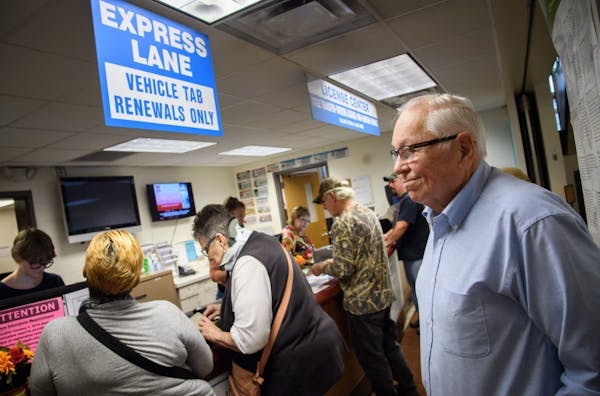The administration of Gov. Mark Dayton said Wednesday that it needs $43 million in additional state funding to fix a glitch-ridden upgrade to Minnesota's vehicle licensing and registration system.
Officials from Minnesota IT Services and the Department of Public Safety detailed the funding needs as part of a new project road map for the Minnesota License and Registration System (MNLARS). The rollout in July was a decade in the works and has cost $93 million to date, only to be plagued by problems that led to lines at licensing offices, long delays in issuance of new car titles and other difficulties.
Those tasked with the fixes say the extra funding is needed to address "high-priority defects" and add enhancements to the system.
Republican lawmakers say the $43 million is too steep after all the money that's already gone into the project, setting up a fight with Dayton — the second-term DFLer — in the upcoming legislative session that begins Feb. 20.
The flagging MNLARS project is already an election-year issue. Republicans are using it as a political cudgel, trying to convince voters that even though Dayton isn't running again, MNLARS exposes incompetent DFL management of important state projects.
Dana Bailey, executive director of projects and initiatives for MN.IT, said that without the new money, there's no other way to achieve a working system.
"It's a necessary number, and unfortunately it is at this point our only option," Bailey said. "There is no product to buy off a shelf."
Bailey also said lawmakers would have to approve some of that money in the first week of the legislative session that starts Feb. 20, or they won't be able to keep a timeline to fix major defects by July. They are now aiming to wrap up the project by December 2019.
"I fully support these recommendations, and urge legislative leaders to work with my administration to ensure we have the funding and support necessary to make urgently needed improvements," Dayton said in a statement.
Republican legislators have been heavily critical of the administration's handling of the project.
Rep. Jim Nash, R-Waconia, said the projected end date of 2019 is "grossly unacceptable," and that legislators now must fund a project that's more than a year overdue.
"Who's taking responsibility for this disaster? I think Minnesotans want to know," he said.
Asked at the news conference who is being held accountable, Bailey said, "I can't answer that."
The new road map was developed with input from auto dealers, deputy registrars, state lawmakers and others. Officials promise the funding will be a cure-all for the MNLARS defects and inconveniences, and will modernize the system.
The $43 million in additional funding largely covers critical system improvements, with $6 million going toward customer service at the Department of Public Safety ahead of the October rollout of REAL ID, a federal driver's license requirement that Minnesota has been slow to adopt.
"This is not a rebuild, this is an addition to … the skeleton that already exists," Bailey said.
MNLARS system costs were initially estimated at $48 million before later climbing to $93 million. Costs would flirt with $140 million if the requested funding is granted.
Joan Redwing, chief enterprise architect for MN.IT, said a lapse in technical leadership was partly responsible for launch issues.
"We had bottlenecks of decisionmaking, and we didn't have enough programmer supervisors. We had a tier of management, but we did not have individual supervisors that managed small groups of programmers," she said.
Redwing said that several contractors raised red flags about the system before its debut and were told any issues would be fixed post-launch.
Ryan Faircloth is a University of Minnesota student on assignment for the Star Tribune. Patrick Coolican • 651-925-5042
